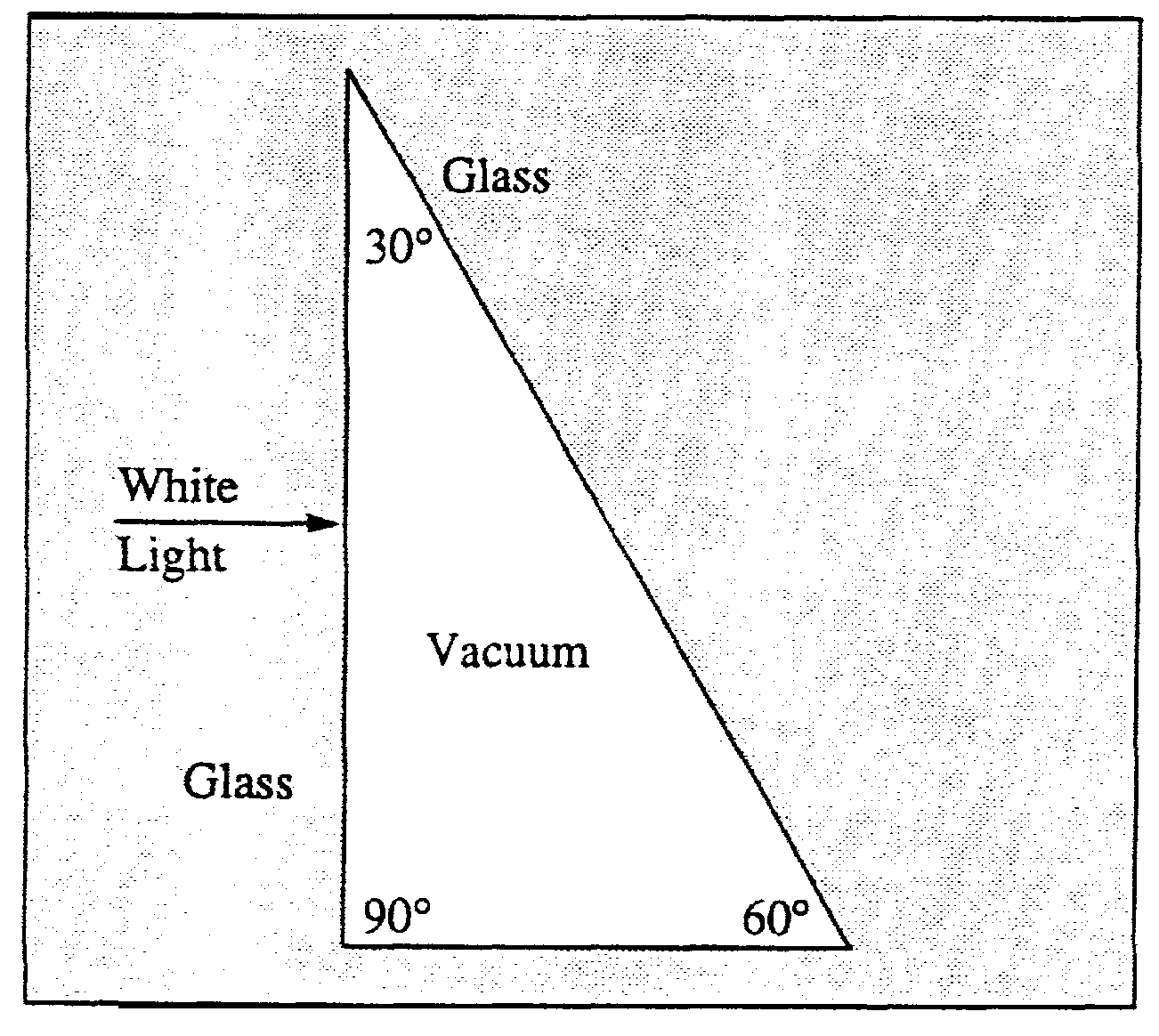
1993 B4
The glass prism shown below has an index of refraction that depends on the wavelength of the light that enters It. The index of refraction is 1.50 for red light of wavelength 700 nanometers (700 x 10-9 meter) in vacuum and 1.60 for blue light of wavelength 480 nanometers in vacuum. A beam of white light is incident from the left, perpendicular to the first surface, as shown in the figure, and is dispersed by the prism into its spectral components.
(a) Determine the speed of the blue light in the glass.
(b) Determine the wavelength of the red light in the glass.
(c) Determine the frequency of the red light in the glass.

(d) On the figure above, sketch the approximate paths of both the red and the blue rays as they pass through the glass and back out into the vacuum. Ignore any reflected light. It is not necessary to calculate any angle, but do clearly show the change in direction of the rays, if any, at each surface and be sure to distinguish carefully any differences between the paths of the red and the blue beams.
(e) The figure below represents a wedge shaped hollow space in a large piece of the type of glass described above. On this figure, sketch the approximate path of the red and the blue rays as thev pass through the hollow prism and back into the glass. Again, ignore any reflected light, clearly show changes in direction, if any, where refraction occurs, and carefully distinguish any differences in the two paths.
